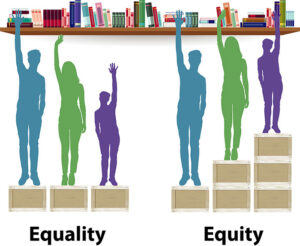
9. Business Presentation dives into the essentials of crafting impactful presentations that resonate with any audience. This topic unpacks the fundamental components that make a business presentation not just informative but also engaging, ensuring that your message is delivered effectively.
Whether it’s for pitching to stakeholders, presenting innovative ideas, or sharing valuable insights, the ability to communicate clearly and persuasively is paramount. By understanding the nuances of audience analysis and leveraging innovative techniques, you can elevate your presentations to new heights.
Business Presentation Fundamentals
Business presentations are essential tools in various professional settings, serving as a platform to communicate ideas, strategies, and information effectively. An effective presentation can captivate an audience and achieve business goals, whether it’s for pitching a new project, reporting results, or training employees.
Key Components of an Effective Business Presentation
An effective business presentation consists of several key components that ensure the message is delivered clearly and engagingly. These components include:
- Clear Objective: Define the purpose of the presentation upfront.
- Structured Content: Organize information logically, typically with an introduction, body, and conclusion.
- Engaging Visuals: Use slides or graphics to enhance understanding and retention.
- Audience Engagement: Involve the audience through questions or interactive elements.
- Practice and Delivery: Rehearse to ensure smooth delivery and confidence.
Types of Business Presentations
There are various types of business presentations, each serving distinct purposes:
- Informative Presentations: Aim to provide information and insights.
- Persuasive Presentations: Seek to convince the audience to adopt a specific viewpoint or take action.
- Training Presentations: Designed to enhance skills or knowledge among employees.
Importance of Audience Analysis
Understanding the audience is crucial in presentation design. Audience analysis helps tailor content and delivery to meet their needs and preferences. Key factors to consider include:
- Demographics: Age, gender, and professional background of the audience.
- Knowledge Level: Assess the audience’s familiarity with the topic.
- Expectations: What does the audience hope to gain from the presentation?
Business Innovation in Presentations
Innovation in business presentations can significantly enhance engagement and effectiveness. By adopting new techniques and technologies, presenters can create memorable experiences that resonate with their audience.
Innovative Techniques for Enhancing Presentations

Incorporating innovative techniques can set a presentation apart:
- Interactive Tools: Utilize audience response systems to collect real-time feedback.
- Visual Storytelling: Craft narratives using visuals to create emotional connections.
- Augmented Reality: Integrate AR elements for an immersive experience.
Successful Innovative Business Presentations
Examples of successful presentations that embraced innovation include:
- TED Talks: Known for their engaging storytelling and minimalistic slide design.
- Apple Product Launches: Utilize a blend of visuals, demonstrations, and suspenseful narratives.
Incorporating New Technologies
To stay relevant, presenters should design a plan to integrate new technologies into their presentations. Key considerations include:
- Research Tools: Explore software that enhances visuals or collaboration.
- Feedback Mechanisms: Implement systems to gather audience feedback post-presentation.
International Business Considerations
In a globalized business environment, understanding cultural differences is vital when delivering presentations to international audiences. Adapting content and delivery can lead to more effective communication.
Cultural Differences Affecting Presentation Styles
Different cultures have unique preferences that influence presentation styles. For example:
- Formality: Some cultures prefer formal presentations, while others embrace a relaxed style.
- Directness: Cultures vary in how directly they communicate; some may prefer a more indirect approach.
Adapting Presentations for International Audiences
Adapting presentations involves understanding and respecting cultural nuances. Strategies include:
- Language Considerations: Use simple language and consider translations if necessary.
- Local Examples: Incorporate relevant local case studies to resonate with the audience.
Effective Communication Across Cultures
To ensure effective communication across diverse cultures, presenters should:
- Research Cultural Norms: Understand the cultural context of the audience.
- Be Respectful: Show sensitivity to cultural differences in communication styles.
Business Interviews and Presentations
Presentations play a crucial role in job interviews, allowing candidates to showcase their skills and fit for the position. Preparing effectively for these presentations can greatly influence the interview outcome.
Preparing a Presentation for Job Interviews
Candidates should thoroughly prepare by:
- Researching the Company: Understand the organization’s culture and values.
- Structuring Content: Clearly Artikel qualifications, experiences, and how they align with the role.
Role of Presentations in Demonstrating Skills
Presentations serve as a platform for candidates to demonstrate their skills effectively:
- Communication Skills: Showcase clarity and confidence in delivering information.
- Problem-Solving Abilities: Present case studies or examples that highlight problem-solving skills.
Checklist for Creating Impactful Interview Presentations
An effective checklist for preparing interview presentations includes:
- Content Relevance: Ensure the material is relevant to the job role.
- Visual Aids: Use visuals to support and enhance the message.
- Practice Delivery: Rehearse multiple times to gain confidence.
Job Search Techniques Involving Presentations
In today’s competitive job market, presentations can be powerful tools in job search strategies. Candidates can leverage presentations to stand out from the crowd.
Utilizing Presentations in Job Search Strategies
Using presentations effectively in job searches can involve:
- Networking Events: Present personal brand and skills at industry gatherings.
- Portfolio Presentations: Showcase work samples to demonstrate capabilities.
Creating a Standout Portfolio Presentation
To create a standout portfolio presentation, candidates should focus on:
- Visual Impact: Utilize engaging visuals to highlight work.
- Storytelling Approach: Present experiences as narratives to connect with potential employers.
Examples of Impressive Presentation Topics
Presentation topics that can impress potential employers include:
- Industry Trends: Present insights about current trends in the candidate’s field.
- Project Achievements: Showcase successful projects that demonstrate skills and impact.
Business Management and Presentation Skills
Effective management relies heavily on presentation skills. Managers who can communicate clearly and persuasively foster better team dynamics and outcomes.
Essential Management Skills Enhancing Presentation Effectiveness

Key management skills that enhance presentation effectiveness include:
- Leadership: Engage and motivate teams through compelling narratives.
- Decision-Making: Present data-driven insights to support decisions.
Relationship Between Leadership and Presentation Delivery
There is a direct correlation between a manager’s leadership style and their presentation delivery. Effective leaders often exhibit the following traits:
- Confidence: Deliver presentations with authority.
- Empathy: Connect with the audience’s needs and concerns.
Training Program for Improving Presentation Skills
Designing a training program focused on enhancing presentation skills for managers involves:
- Workshops: Conduct practical workshops on presentation design and delivery.
- Feedback Sessions: Provide opportunities for constructive feedback on presentation style.
Conclusion
In summary, mastering the art of business presentations is crucial for anyone looking to make a lasting impression in professional settings. As we’ve explored, from understanding your audience to employing cutting-edge technologies, every aspect contributes to a powerful presentation that can drive decisions and inspire action.
Question & Answer Hub
What are the key components of a successful business presentation?
The key components include a clear objective, engaging content, visual aids, audience analysis, and effective delivery techniques.
How can I adapt my presentation for an international audience?
To adapt, consider cultural differences, use simple language, and include visual elements that are universally understood.
What tools can enhance my business presentations?
Tools like PowerPoint, Prezi, and Canva can enhance visual appeal, while platforms like Zoom and Microsoft Teams are great for virtual presentations.
How important is rehearsal for a business presentation?
Rehearsal is crucial; it helps you refine your delivery, manage time effectively, and build confidence.
What tips can I use to engage my audience during a presentation?
Involve your audience through questions, interactive elements, and relatable anecdotes to keep them engaged throughout.





